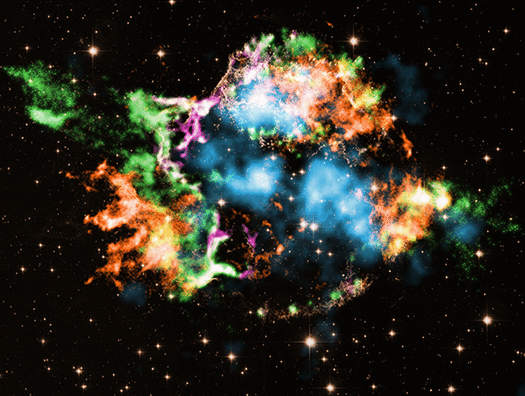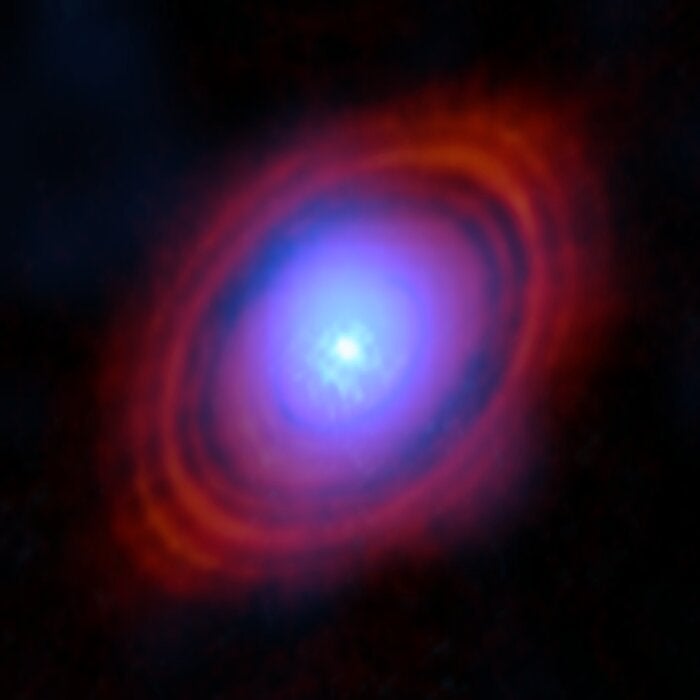Cassiopeia A, named for its location in the famous w-shaped constellation, is one of the Milky Way’s youngest supernova remnants. Only about 350 years old, this stunning sphere of dust and gas is all that’s left of a massive star that ended its life in a powerful explosion.
Although supernova remnants aren’t rare, there is still much that astronomers don’t know about exactly how massive stars explode and die. But a new discovery made with NASA’s Chandra X-ray Telescope is shedding light on the situation.
Here’s what astronomers believe happens when a massive star explodes: First, the star’s core begins to collapse under its own gravity. That collapse generates shock waves, which rebound inside the core and begin to move outward through the star, ripping it apart in a spectacular supernova. Along the way, those shock waves transform some of the star’s material into other elements.
Researchers believe supernovae are the source of numerous heavy elements — such as those further down than iron on the periodic table — found on Earth today. That includes titanium, which astronomers have spotted (colored blue in the image above) in Cassiopeia A before. But Chandra recently spotted a different type, or isotope, of titanium than previously detected. Different isotopes of a given element have the same number of protons but different numbers of neutrons, which affects whether or not they will decay into lighter elements over time. This newly spotted isotope is stable, meaning it doesn’t decay. And stable titanium has never before been seen in any supernova at all.
That’s important because it could solve a long-standing mystery about how supernovae occur at all. In computer simulations, those initial shock waves created when the core collapses lose momentum quickly, dissipating before the supernova explosion can even occur. But since supernovae obviously take place, something is missing. Adding in the effects of neutrinos — lightweight particles created in the star’s collapse — solves the problem by prompting the creation of bubbles of material that quickly expand, lending the shock wave the energy it needs to keep going. But astronomers had thus far been unable to find evidence to support the theory that neutrinos can drive such bubbles to power shock waves, specifically.
This new detection changes that: The stable titanium isotope that Chandra spotted in Cassiopeia A — alongside other elements such as chromium and iron (colored orange) — matches the elements expected to form inside the bubbles created by a neutrino-driven explosion. Specifically, the temperature and density of material in such bubbles create the conditions needed to form the types of elements seen in the remnant. That’s pretty significant evidence that the neutrino theory is correct, at least for explosions like Cassiopeia A.










